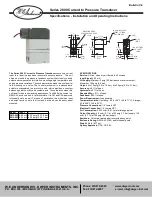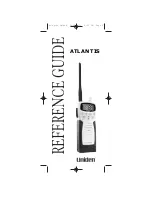
VSWR and AGC circuits and additionally from U2A which is a ‘mute’ type signal. R5
controls the threshold of control of these signals. The circuit configuration comprising
CR1, CR2 and CR3 form a matched attenuator, biased by the output of U2B, R2, R3, R7
and R8. As the output of U2B rises, the attenuation of the circuit decreases, thus
increasing the RF output as J2.
METERING BOARD
CIRCUIT DESCRIPTION
The Metering board detects forward and reflected power levels and processes
these signals to provide outputs for metering, telemetry, AGC and VSWR protection.
The forward and reflected power detectors are ‘visual only’ detectors. The
description that fo llows is for the forward detector portion only; the ‘reflected’ detector is
identical. CR1 and Q1 form a basic detector circuit and C3, C4 and L1 trap out the
4.5MHz aural components. CR3 and C7 act as a peak detector providing the buffer
circuit of U1 with a peak-level voltage.
The outputs of the peak detectors are applied to operational amplifiers U1B and
U2B which have a zeroing function and provide the drive for the metering circuit and
telemetry. These amplifiers also drive the AGC and VSWR circuits. Operation
amplifiers U1A and U2A compare the forward and reflected signals to preset levels and
provide an error signal to the Pin Attenuator board. An additional circuit consisting of
U3 acts as a comparator to drive an LED on the indicator board as the VSWR signal rises
about the preset level.
Set up Procedure for Metering, VSWR and AGC Circuits
•
Set the AGC/MAN Switch on the front panel to the MAN position.
•
Terminate the output of the amplifier into a suitable 50ohm load through a
thru- line wattmeter or equivalent.
•
Turn the visual and aural carrier switches on the exciter to the OFF
position.
•
Apply DC power to the amplifier. The blower should come on. There
should be no output power indication.
•
Turn the metering switch to the 35V position. Measure the voltage at E12
on the Regulator board and adjust R34 for a corresponding front panel
reading on the lower meter scale.
•
Turn the metering switch to the 50V position. Measure the voltage at E13
on the Regulator board and adjust R37 for a corresponding front panel
reading on the lower meter scale.
•
Turn the metering switch to the FWD position and adjust R18 on the
metering board for a zero reading on the front panel meter. This should
also correspond to a minimum voltage at TP1. Repeat this procedure for
the RFL position, R2 and TP2.


































